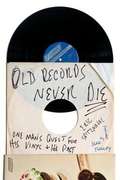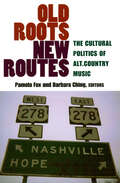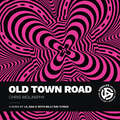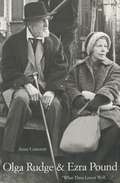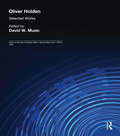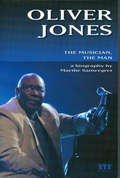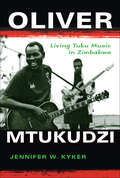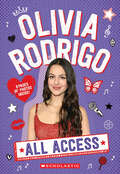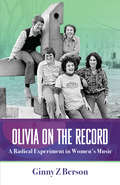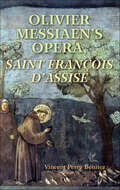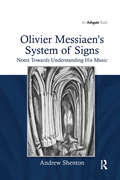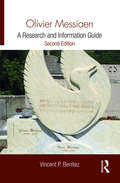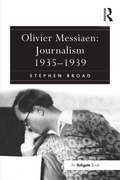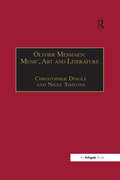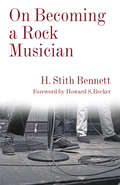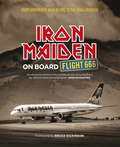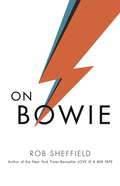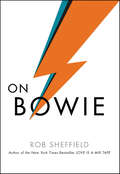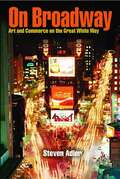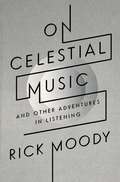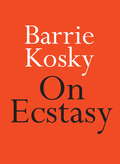- Table View
- List View
Old Records Never Die: One Man's Quest for His Vinyl and His Past
by Eric Spitznagel Jeff TweedyForeword by Wilco's Jeff Tweedy"Memories are far more indelible when married to the physical world, and Spitznagel proves the point in this vivid book. We love vinyl records because they combine the tactile, the visual, the seeable effects of age and care and carelessless. When he searches for the records he lost and sold, Spitznagel is trying to return to a tangible past, and he details that process with great sensitivity and impact."--Dave Eggers, author of The CircleHigh Fidelity meets Killing Yourself to Live in this memoir of one man's search for his lost record collection. As he finds himself within spitting distance of middle-age, journalist Eric Spitznagel feels acutely the loss of...something. Freedom? Maybe. Coolness? Could be. The records he sold in a financial pinch? Definitely. To find out for sure, he sets out on a quest to find the original vinyl artifacts from his past. Not just copies. The exact same records: The Bon Jovi record with his first girlfriend's phone number scrawled on the front sleeve. The KISS Alive II he once shared with his little brother. The Replacements Let It Be he's pretty sure, 20 years later, would still smell like weed. As he embarks on his hero's journey, he reminisces about the actual records, the music, and the people he listened to it with--old girlfriends, his high school pals, and, most poignantly, his father and his young son. He explores the magic of music and memory as he interweaves his adventures in record- culture with questions about our connection to our past, whether we can ever recapture it, and whether we would want to if we could.From the Trade Paperback edition.
Old Roots, New Routes: The Cultural Politics of Alt.Country Music
by Barbara Ching Pamela FoxOld Roots, New Routes takes an in-depth look at the many influences, meanings, and identities of this contemporary music form. Because the definition of the term alt.country changes continually, even the genre's own mouthpiece, the Web site nodepression.com, declared its terrain to be "alternative country (whatever that is)." Despite alt.country's murky parameters, its origins, indeed, its patron saints, are generally acknowledged to range from the Carter Family and Hank Williams---as interpreters of traditional American country---to the country-rock fusions of Gram Parsons and Steve Earle. Just as other musical genres before it have distanced themselves from the popular and commercial center, from the start alt.country has positioned itself as a different kind of music than the slick country sounds emanating from Nashville hit machines such as Garth Brooks and Shania Twain. And yet alt.country's embrace of authenticity and disdain for commercialism---while simultaneously injecting into a traditional, working-class music form an often cosmopolitan flavor and "Generation X" values---has resulted in a fascinating hybrid full of contradictions. In Old Roots, New Routes, Pamela Fox and Barbara Ching bring together a range of scholars to investigate as never before this significant contemporary music form, providing in addition new ways to approach the worlds of country and alternative music more generally. Individual essays explore the work of a variety of artists, including Neko Case, Jay Farrar, Justin Treviño, and alt.country "hero" Gram Parsons, along with promotional rhetoric, album art, advertising, and fan Web sites, to offer readers a comprehensive understanding of how alt.country functions as a distinct musical form. Pamela Fox is Associate Professor of English and currently the Director of the Women's and Gender Studies Program at Georgetown University. She is the author of Class Fictions: Shame and Resistance in the British Working-Class Novel, 1890–1945. Barbara Ching is Associate Professor at the University of Memphis. Her previous books include Wrong's What I Do Best: Hard Country Music and Contemporary Culture and Knowing Your Place: Rural Identity and Cultural Hierarchy, coedited with Gerald Creed.
Old Town Road (Singles)
by Chris MolanphyIn Old Town Road, Chris Molanphy considers Lil Nas X’s debut single as pop artifact, chart phenomenon, and cultural watershed. “Old Town Road” was more than a massive hit, with the most weeks at No. 1 in Billboard Hot 100 history. It is also a prism through which to track the evolution of popular music consumption and the ways race influences how the music industry categorizes songs and artists. By both lionizing and satirizing genre tropes—it’s a country song built from an alternative rock sample, a hip-hop song in which nobody raps, a comical song that transcends novelty, and a queer anthem—Lil Nas X troubles the very idea of genre. Ultimately, Molanphy shows how “Old Town Road” channeled decades of Americana to point the way toward our cultural future.
Olga Rudge and Ezra Pound: What Thou Lovest Well ...
by Anne ConoverA loving and admiring companion for half a century to literary titan Ezra Pound, concert violinist Olga Rudge was the muse who inspired the poet to complete his epic poem,The Cantos,and the mother of his only daughter, Mary. Strong-minded and defiant of conventions, Rudge knew the best and worst of times with Pound. With him, she coped with the wrenching dislocations brought about by two catastrophic world wars and experienced modernism's radical transformation of the arts. In this enlightening biography, Anne Conover offers a full portrait of Olga Rudge (1895-1996), drawing for the first time on Rudge's extensive unpublished personal notebooks and correspondence. Conover explores Rudge's relationship with Pound, her influence on his life and career, and her perspective on many details of his controversial life, as well as her own musical career as a violinist and musicologist and a key figure in the revival of Vivaldi's music in the 1930s. In addition to mining documentary sources, the author interviewed Rudge and family members and friends. The result is a vivid account of a highly intelligent and talented woman and the controversial poet whose flame she tended to the end of her long life. The book quotes extensively from the Rudge-Pound letters--an almost daily correspondence that began in the 1920s and continued until Pound's death in 1972. These letters shed light on many aspects of Pound's disturbing personality; the complicated and delicate balance he maintained between the two most significant women in his life, Olga and his wife Dorothy, for fifty years; the birth of Olga and Ezra's daughter Mary de Rachewiltz; Pound's alleged anti-Semitism and Fascist sympathies; his wartime broadcasts over Rome radio and indictment for treason; and his twelve-year incarceration in St. Elizabeth's Hospital for the mentally ill.
Oliver Holden: Selected Works (Music of the New American Nation: Sacred Music from 1780 to 1820)
by David W. MusicFirst Published in 1998. Routledge is an imprint of Taylor & Francis, an informa company.
Oliver Jones
by Marthe SansregretBorn in Montreal, Oliver Jones performed his first piano concert at five years old. He has become one of the most celebrated representatives of the Montreal Jazz Festival and a worldwide musical ambassador for Canada on many international tours. This exclusive authorized biography begins with his roots the enslavement of his African ancestors and immigration of his parents to Canada from Barbados and takes us to the present. Oliver Jones has received many awards to recognize his achievements, both as a musician and as a human being: the Martin Luther King Award, a Juno Award, the Cool Jazz Award of the Izzy Asper Foundation, the Order of Canada, the Order of Quebec, the Oscar Peterson Award, the Governor Generals Performing Arts Award, and in 2006, two National Jazz Awards: Best Jazz Keyboard of the Year and Best CD with Ranee Lee for their album Just You, Just Me
Oliver Mtukudzi: Living Tuku Music in Zimbabwe (African Expressive Cultures)
by Jennifer W. KykerOliver "Tuku" Mtukudzi, a Zimbabwean guitarist, vocalist, and composer, has performed worldwide and released some 50 albums. One of a handful of artists to have a beat named after him, Mtukudzi blends Zimbabwean traditional sounds with South African township music and American gospel and soul, to compose what is known as Tuku Music. In this biography, Jennifer W. Kyker looks at Mtukudzi's life and art, from his encounters with Rhodesian soldiers during the Zimbabwe war of liberation to his friendship with American blues artist Bonnie Raitt. With unprecedented access to Mtukudzi, Kyker breaks down his distinctive performance style using the Shona concept of "hunhu," or human identity through moral relationships, as a framework. By reading Mtukudzi's life in connection with his lyrics and the social milieu in which they were created, Kyker offers an engaging portrait of one of African music's most recognized performers. Interviews with family, friends, and band members make this a penetrating, sensitive, and uplifting biography of one of the world's most popular musicians.
Olivia Rodrigo: All Access
by Emma Carlson BerneAre you obsessed with Olivia Rodrigo or is she just a stranger?Get to know the real Olivia Rodrigo in this biography that's packed with fun facts, stats, top tens, listicles, and lots more! Grab your driver's license and follow Olivia's journey from High School Musical: The Musical: The Series to GUTS and beyond!It's all inside this book — Olivia's teenage dreams, her embarassing love stories, her grudges, her gut-spilling, and her friends and fans. Plus, you'll be obsessed with discovering Olivia's faves — sour foods, lyrics, fellow musicians, and much more!With eight pages of full-color photos, this book is good 4 u!
Olivia on the Record: A Radical Experiment in Women's Music
by Ginny Z BersonThe burgeoning lesbian and feminist movements of the '70s and '80s created an impetus to form more independent and equitable social and cultural institutions—bookstores, publishers, health clinics, and more—to support the unprecedented surge in women's arts of all kinds. Olivia Records was at the forefront of these models, not only recording and distributing women's music but also creating important new social spaces for previously isolated women and lesbians through concerts and festivals. Ginny Z. Berson, one of Olivia's founding members and visionaries, kept copious records during those heady days—days also fraught with contradictions, conflicts, and economic pitfalls. With great honesty, Berson offers her personal take on what those times were like, revisiting the excitement and the hardships of creating a fair and equitable lesbian-feminist business model—one that had no precedent.
Olivier Messiaen's Opera, Saint François d'Assise
by Vincent Perez BenitezIn this comprehensive study of Olivier Messiaen's magnum opus, Saint François d'Assise, Vincent Perez Benitez examines the opera from both theological and musical-analytical perspectives to ask how Messiaen expresses his Catholic theology through his work. Benitez combines a close reading of the opera score with accounts from Messiaen's associates, studies of Messiaen's birdsong notebooks and other primary documents, and an examination of the religious, musical, poetic, and visual arts literature with which the composer was familiar to explore how the opera's harmonic language and sound-color relationships motivate its musical meaning and expression. Through his analysis of these diverse sources and comparisons of Saint François d'Assise with other works such as Berg's Wozzeck and Wagner's Parsifal, Benitez places Messiaen's compositional practice within larger musical perspectives and historical contexts.
Olivier Messiaen's System of Signs: Notes Towards Understanding His Music
by Andrew ShentonAndrew Shenton's groundbreaking cross-disciplinary approach to Messiaen's music presents a systematic and detailed examination of the compositional techniques of one of the most significant musicians of the twentieth century as they relate to his desire to express profound truths about Catholicism. It is widely accepted that music can have mystical and transformative powers, but because 'pure' music has no programme, Messiaen sought to refine his compositions to speak more clearly about the truths of the Catholic faith by developing a sophisticated semiotic system in which aspects of music become direct signs for words and concepts. Using interdisciplinary methodologies drawing on linguistics, cognition studies, theological studies and semiotics, Shenton traces the development of Messiaen's sign system using examples from many of Messiaen's works and concentrating in particular on the M tations sur le myst de la Sainte Trinit or organ, a suite which contains the most sophisticated and developed use of a sign system and represents a profound exegesis of Messiaen's understanding of the Catholic triune God. By working on issues of interpretation, Shenton endeavours to bridge the traditional gap between scholars and performers and to help people listen to Messiaen's music with spirit and understanding.
Olivier Messiaen's Turangalîla-symphonie (Elements in Music since 1945)
by Andrew ShentonAs one of only a few pieces not primarily inspired by Messiaen's Catholic faith, but by human love as described in the romance of Tristan and Isolde and elsewhere, the Turangalîla-symphonie is contextualized in Messiaen's oeuvre and as a genre piece. Using previously untranslated information from Messiaen's own description of the work in his Traité, close analysis of the music seeks to demystify some of the complex innovations he made to his musical language, especially in the areas of rhythm and orchestration. This Element pays special attention to the fragmentary and elusive program which is explained with reference to Messiaen's fascination with surrealism at this time. Information is included on the commission and composition of the piece, its premiere by the Boston Symphony Orchestra conducted by Leonard Bernstein, its revision by Messiaen in 1990, and its reception history in both live and recorded performances.
Olivier Messiaen: A Research and Information Guide (Routledge Music Bibliographies)
by Vincent BenitezOlivier Messiaen: A Research and Information Guide, Second Edition presents researchers with the most significant and helpful resources on Olivier Messiaen, one of the twentieth century's greatest composers. With multiple indices, this annotated bibliography will serve as an excellent tool for librarians, researchers, and scholars sorting through the massive amount of material in the field. The second edition has been fully revised and updated.
Olivier Messiaen: Journalism, 1935-1939
by Stephen BroadOne of the foremost composers of the twentieth century, Olivier Messiaen wrote widely on his music and on his beliefs. This is the first edition of his early journalism and provides both the original French text and an English translation. The writing in this volume dates from the 1930s, before the composer gained the international reputation that he and his music now enjoy. The pieces he wrote range from reviews of individual performances to essays on particular works or composers and articles that discuss more general themes such as sincerity of expression in music. Many of the articles included in this collection are new to the Messiaen bibliography, and others are available here for the first time in English. A number are, as Broad describes them, 'quietly shocking' in that they force us to reappraise certain aspects of the composer such as his role in La Jeune France, and his wider participation in the debates of his time. This edition, therefore, represents a new source for understanding Messiaen and provides a fascinating glimpse of the composer in the early part of his career.
Olivier Messiaen: Music, Art and Literature (Music And Literature Ser.)
by Nigel SimeoneWhen Olivier Messiaen died in 1992, the prevailing image was of a man apart; a deeply religious man whose only sources of inspiration were God and Nature and a composer whose music progressed along an entirely individual path, artistically impervious to contemporaneous events and the whims both of his contemporaries and the critics. Whilst such a view contains a large element of truth, the past ten years has seen an explosion of interest in the composer, and the work of a diverse range of scholars has painted a much richer, more complex picture of Messiaen. This volume presents some of the fruits of this research for the first time, concentrating on three broad, interrelated areas: Messiaen's relationship with fellow artists; key developments in the composer's musical language and technique; and his influences, both sacred and secular. The volume assesses Messiaen's position as a creative artist of the twentieth century in the light of the latest research. In the process, it identifies some of the key myths, confusions and exaggerations surrounding the composer which often mask equally remarkable truths. In attempting to reveal some of those truths, the essays elucidate a little of the mystery surrounding Messiaen as a man, an artist, a believer and a musician. Specifically, the volume covers Messiaen's attitudes and associations to Cocteau, Stravinsky's Les Noces, Dutilleux and Toesca, as well as exploring his teaching techniques, the Trait�e rythme, de couleur et d'ornithologie, Messiaen's harmony, performing and transcription techniques, composing for Ondes Martenot, his association with ballet, Saint Fran‘s d'Assise and the influence of his faith. Messiaen himself contributes directly in the form of a speech that he gave about the tapestry-maker Jean Lur and the collection also includes the first literary translation of L' en bourgeon; the garland of poems written by Messiaen's mother, C�le Sauvage, when she was expecting him. The composer de
On BTS: Pop Music, Fandom, Sincerity (Atlantic Editions)
by Lenika CruzA love letter to Korean pop sensation BTS and an ode to fandom. An Atlantic Edition, featuring long-form journalism by Atlantic writers, drawn from contemporary articles or classic storytelling from the magazine&’s 165-year archive.The supersonic rise of the Korean pop group BTS may seem enigmatic to some, but for Lenika Cruz, senior culture editor at The Atlantic, their worldwide fame is obvious. As Cruz argues in On BTS: Pop Music, Fandom, Sincerity, the group&’s trajectory—debuting on a relatively obscure label in Korea to becoming a global household name in just a few years—is a natural result of their authenticity, artistry, energy, social conscientiousness, and general coolness. As a non-English-language band finding record-breaking international success, BTS is helping usher in a fresh, more inclusive era in the music industry. In this love letter to the once-in-a-generation pop sensation, Cruz narrates her own unexpected journey into the fandom, and in doing so might welcome you in, too.
On Becoming a Rock Musician (Legacy Editions)
by H. Stith BennettIn the 1960s and 1970s, becoming a rock musician was fundamentally different than playing other kinds of music. It was a learned rather than a taught skill. In On Becoming a Rock Musician, sociologist H. Stith Bennett observes what makes someone a rock musician and what persuades others to take him seriously in this role. The book explores how bands form; the backstage and onstage reality of playing in a band; how bands promote themselves and interact with audiences and music professionals like DJs; and the role of performance.
On Board Flight 666
by Iron Maiden John McMurtrieThe first and only official book from Britain's biggest heavy-metal band.IRON MAIDEN are a global phenomenon. On board their customised Boeing 757 plane named Ed Force One, and piloted by lead singer and airline captain Bruce Dickinson, the band, crew and 12 tonnes of equipment traversed the planet and broke the mould of traditional touring forever by playing concerts in every continent except Antarctica! Setting off in early 2008 on the Somewhere Back In Time world tour, through to the epic Final Frontier tour, Maiden finally played two sold-out shows in their native London. The Final Frontier tour celebrated their 15th and most successful studio album to date, hitting the No.1 spot in at least 28 countries. The band's official photographer John McMurtrie accompanied them on the tours and his unrestricted access allowed him to capture exclusive images and moments both onstage and off, in over 600 spectacular photographs annotated with individual insights and anecdotes.ON BOARD FLIGHT 666 provides an unprecedented insight into one of the most adventurous rock tours ever undertaken; and into what makes this band so special.
On Bowie
by Rob SheffieldOn Bowie is a thoughtful and loving meditation on the life of the late David Bowie that explores his creative legacy and the enduring and mutual connection he enjoyed with his fansInnovative. Pioneering. Brave. Until his death in January 2016, David Bowie created art that not only pushed boundaries, but helped fans understand themselves and view the world from fantastic new perspectives.When the shocking news of his death on January 10, 2016 broke, the outpouring of grief and adulation was immediate and ongoing. Fans around the world and across generations paid homage to this brilliant, innovate, ever-evolving artist who both shaped and embodied our times.In this concise and penetrating book, highly-regarded Rolling Stone critic, bestselling author, and lifelong Bowie fan Rob Sheffield shares his own feelings about the passing of this icon and explains why Bowie's death has elicited such an unprecedented emotional outpouring from so many.
On Bowie
by Rob SheffieldFrom the New York Times bestselling author of Love Is a Mix Tape, a thoughtful and loving meditation on the life of the late David Bowie that explores his creative legacy and the enduring and mutual connection he enjoyed with his fans.Innovative. Pioneering. Brave. Until his death in January 2016, David Bowie created art that not only pushed boundaries, but helped fans understand themselves and view the world from fantastic new perspectives.When the shocking news of his death on January 10, 2016 broke, the outpouring of grief and adulation was immediate and ongoing. Fans around the world and across generations paid homage to this brilliant, innovate, ever evolving artist who both shaped and embodied our times.In this concise and penetrating book, featuring color photographs, highly regarded Rolling Stone critic, bestselling author, and lifelong Bowie fan Rob Sheffield shares his own feelings about the passing of this icon and explains why Bowie’s death has elicited such an unprecedented emotional outpouring from so many lives.
On Broadway: Art and Commerce on the Great White Way
by Steven AdlerAt a critical, transitional moment in the history of Broadway—and, by extension, of American theatre itself—former Broadway stage manager Steven Adlerenlists insider perspectives from sixty-six practitioners and artists to chronicle the recent past and glimpse the near future of the Great White Way. From marquee names to behind-the-scenes power brokers, Adler has assembled a distinctly knowledgeable cast of theatre’s elite, including Stephen Sondheim, Arthur Laurents, Des McAnuff, Frank Rich, Robin Wagner, Rocco Landesman, Robert Longbottom, Todd Haimes, Bernard Gersten, and Alan Eisenberg. <P><P> On Broadway: Art and Commerce on the Great White Way spotlights the differing vantage points of performers, artists, writers, managers, producers, critics, lawyers, theatre owners, union leaders, city planners, and other influential players. Each details his or her firsthand account of the creative and economic forces that have wrought extraordinary changes in the way Broadway theatre is conceived, produced, marketed, and executed. Once the paramount site of American theatre, Broadway today is becoming a tourist-driven, family-friendly, middle-class entertainment oasis in Midtown, an enterprise inextricably bound to the larger mosaic of national and international professional theatre. <P><P> Accounting for this transformation and presaging Broadway’s identity for the twenty-first century, Adler and his interviewees assess the impact of the advent of corporate producers, the ascendance of not-for-profit theatres on Broadway, and the growing interdependence between regional and Broadway productions. Also critiqued are the important roles of the radical urban redevelopment staged in Times Square and the changing demographics and appetites of contemporary theatre audiences in New York and around the globe. <P><P> Actors and administrators, performers and producers, theatre students and theatregoers will all benefit from the perceptive insights in this authoritative account of theatre making for the new millennium.
On Celestial Music: And Other Adventures in Listening
by Rick MoodyRick Moody has been writing about music as long as he has been writing, and this book provides an ample selection from that output. His anatomy of the word cool reminds us that, in the postwar 40s, it was infused with the feeling of jazz music but is now merely a synonym for neat. "On Celestial Music," which was included in Best American Essays, 2008, begins with a lament for the loss in recent music of the vulnerability expressed by Otis Redding's masterpiece, "Try a Little Tenderness;" moves on to Moody's infatuation with the ecstatic music of the Velvet Underground; and ends with an appreciation of Arvo Part and Purcell, close as they are to nature, "the music of the spheres."Contemporary groups covered include Magnetic Fields (their love songs), Wilco (the band's and Jeff Tweedy's evolution), Danielson Famile (an evangelical rock band), The Pogues (Shane McGowan's problems with addiction), The Lounge Lizards (John Lurie's brilliance), and Meredith Monk, who once recorded a song inspired by Rick Moody's story "Boys." Always both incisive and personable, these pieces inspire us to dive as deeply into the music that enhances our lives as Moody has done--and introduces us to wonderful sounds we may not know.
On Divas: Persona, Pleasure, Power (Atlantic Editions)
by Spencer KornhaberA critic&’s notebook on sparkle and spectacle. An Atlantic Edition, featuring long-form journalism by Atlantic writers, drawn from contemporary articles or classic storytelling from the magazine&’s 165-year archive.A collection of essays on musicians, celebrities, and aesthetic movements and moments that, taken together, characterizes the often used, yet widely misunderstood term diva. On Divas offers readers an original understanding of an age-old phenomenon by drawing together figures as diverse as Beyoncé, Björk, and Donald Trump. With keen insight and genuine enthusiasm, Spencer Kornhaber illustrates how willfulness, pleasure, spectacular self-involvement, and the public&’s blend of adoration and resentment define divadom.
On Ecstasy
by Barrie Kosky'My polish grandmother made a chicken soup like no other chicken soup. To this day, it has, to my knowledge and experience, never been bettered ... Her chicken soup was the Caravaggio of soups. The Rainer Marie Rilke of soups. The Arturo Benedetti Michelangeli of soups.'A compelling and entertaining stoyteller, Barrie Kosky explores the feelings of intense joy and delight, as well as the power and terror that is ecstasy.
